Seven Questions Over Breakfast with Christy Hale
 March 1st, 2016 by jules
March 1st, 2016 by jules
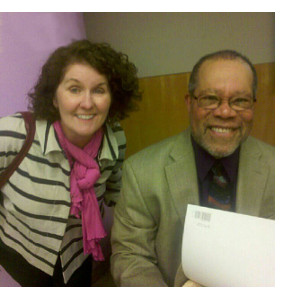 Pictured above is one of Christy Hale’s beautiful illustrations from Cindy Jenson-Elliott’s Antsy Ansel: Ansel Adams, A Life in Nature, coming to shelves in September of this year. “This was Ansel’s front yard,” Christy tells me, “the Golden Gate Headlands before there was a bridge. I work traditionally in collage, pasting down papers and stylized photographic elements. Line work and addition layers are added in Photoshop.”
Pictured above is one of Christy Hale’s beautiful illustrations from Cindy Jenson-Elliott’s Antsy Ansel: Ansel Adams, A Life in Nature, coming to shelves in September of this year. “This was Ansel’s front yard,” Christy tells me, “the Golden Gate Headlands before there was a bridge. I work traditionally in collage, pasting down papers and stylized photographic elements. Line work and addition layers are added in Photoshop.”
It’s a pleasure to have Christy visiting 7-Imp for a cyber-breakfast this morning. She is pictured here with Jerry Pinkney, who was her illustration teacher at Brooklyn’s Pratt Institute. Pinkney must be proud. Christy went on to forge herself an impressive career in this field — not only illustrating but also writing, designing, art directing, and teaching. She talks more below about that work, as well as shares more images from Antsy Ansel — and lots of other artwork.
“A book is architecture of the imagination,” she noted in her 2013 Boston Globe-Horn Book Nonfiction Honor acceptance speech for the wonderful Dreaming Up: A Celebration of Building, which she both wrote and illustrated, and her work over the years has sparked the imagination of many children. As a former school librarian and now a parent, I look forward to any book with her name on the cover. Her richly textured illustrations are ones to pore over.
Since she usually switches her breakfast up between oatmeal/berries/almonds and scrambled eggs, I say we have all of the above. And coffee, because she says there’s always coffee. Looks like we’re aligned on that.
Let’s get to it, and I thank Christy for visiting. …
Jules: Are you an illustrator or author/illustrator?
Christy: Illustrator, moving more toward author/illustrator. I have lots of ideas brewing!

Jules: Can you list your books-to-date?
Christy: See all my books at christyhale.com. A few of my 20+ below:
- Juan Bobo and the Pig, retold by Felix Pitre (Lodestar/Dutton, 1993)
- Elizabeti’s Doll by Stephanie Stuve-Bodeen (Lee & Low Books, 1998) and the two sequels, Mama Elizabeti (2000), Elizabeti’s School (2002)
- The East-West House: Noguchi’s Childhood in Japan, written and illustrated by me (Lee & Low, 2009)
- Our School Garden! by Rick Swann (Readers to Eaters, 2012)
- The Forgiveness Garden by Lauren Thompson (Fiewel & Friends, 2012)
- Dreaming Up: A Celebration of Building, written and illustrated by me (Lee & Low, 2012)
- Amazing Places by Lee Bennett Hopkins, illustrated by Chris Soentpeit and me (Lee & Low, 2015)
- The Cambodian Dancer: Sophany’s Gift of Hope by Daryn Reicherter, illustrated by me (Tuttle, 2015)
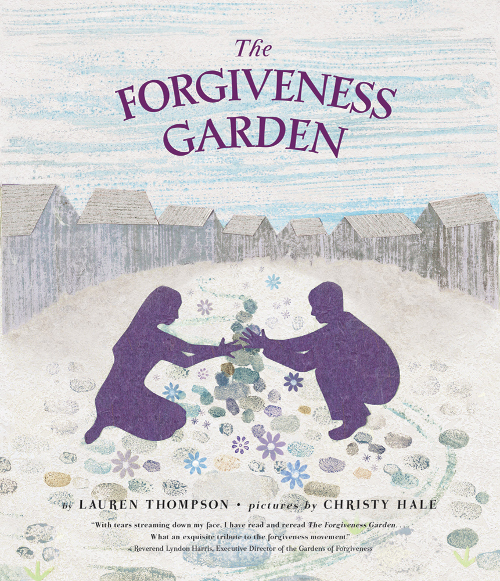
Jules: What is your usual medium?
Christy: I work in some combo of print, stencil, collage, drawing, painting, and digital manipulation. I experiment to discover an approach for each book.
Jules: Where are your stompin’ grounds?
Christy: I live in Palo Alto, California, a mile from the Stanford campus.
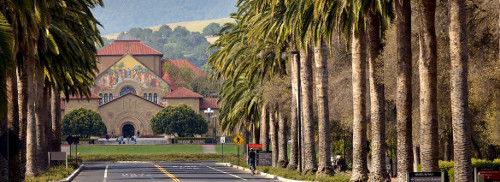
Jules: Can you briefly tell me about your road to publication?
Christy: I decided to become a writer and illustrator when I was ten. In elementary school and in junior high school, my best friend and I wrote and illustrated stories together after school. I took art and creative writing electives throughout high school and even won an honorable mention in a California state poetry contest.
At Lewis & Clark College, I took some classes in calligraphy and bookbinding and created one-of-a-kind books. After college, I learned letterpress printing and worked on limited edition books. I loved the bookmaking phases of being a publisher.
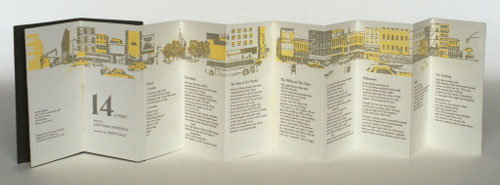
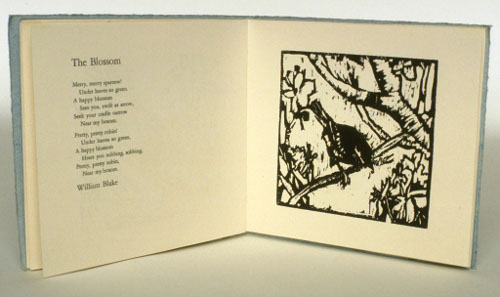
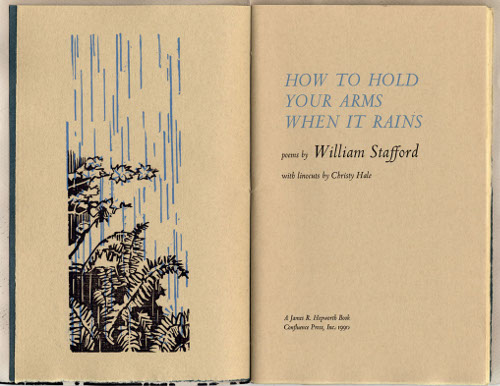
I went to Pratt to study illustration, but I also took every printmaking class offered. After graduation, my etching teacher connected me with an opening at Dutton children’s books. There I met editor Rosemary Brosnan, who encouraged me to show my portfolio. She later offered me my first manuscript, Juan Bobo and the Pig, retold by Felix Pitre.

Around this time, Neal Porter, who had hired me to art direct for Macmillan/Four Winds Press, asked me to illustrate The Complete Poems to Solve by May Swenson.
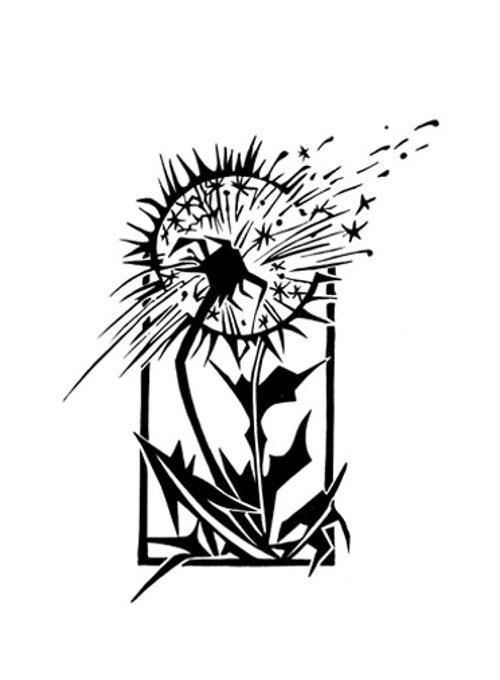
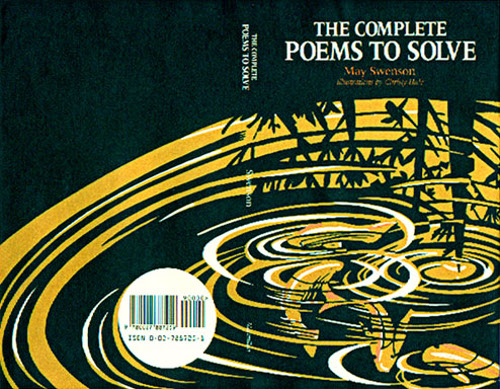
The art for both books was done in linocut. I was used to printing the whole edition! At some point, the light bulb went on that the printer would do the printing. My art began to change to include watercolor, gouache, and collage.
Jules: Can you please point readers to your web site and/or blog?
Christy: christyhale.com.
Jules: If you do school visits, tell me what they’re like.
Christy: Presentations can include:
* A hands-on look at the steps of the publishing process.
* Where ideas come from and how they are developed through research/revision.
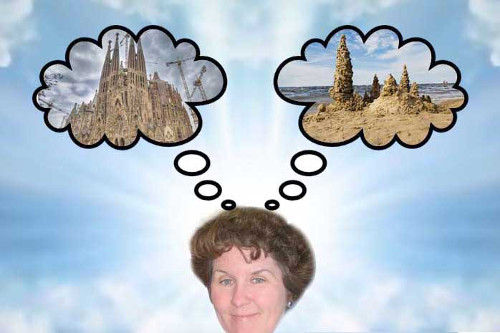

* An art or building project. Activities can be individual or collaborative.
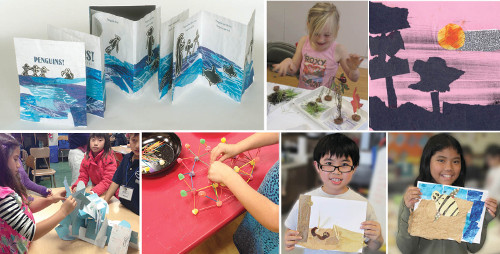
* A writing workshop focusing on poetry, or story, characters, and plot.
* A bookmaking workshop. I can help budding authors and illustrators bring their drawings and stories together into a personal keepsake, or I will design a classroom book project that ties in to your curriculum.
* Immerse in other cultures:
- Read Elizabeti’s Doll, Mama Elizabeti (2000), Elizabeti’s School, all set in Tanzania, then make your own rock doll and print an African kanga.
- Read The East-West House: Noguchi’s Childhood in Japan and then write haiku, design mini 3-D Japanese gardens, or create Japanese prints.
* Discuss bullying and conflict resolution:
- Read The Forgiveness Garden and collaborate on a forgiveness garden mural
* Build! Explore STEM and poetry:
- Read Dreaming Up: A Celebration of Building and [Connie Ann Kirk’s] Sky Dancers, write concrete poems, and build fun structures.
* Dig into nature:
- Read Our School Garden! and then collage a garden bug from recycled materials.
Teachers can find activities and downloadable lessons here.

Jules: How does teaching influence your work?
Christy: Teaching has woven through my whole career. I started my work life as a middle school art teacher, outside Portland, Oregon. I taught calligraphy, ceramics, drawing, painting, sculpture, and new courses I developed, like “Art in the Environment” and “Writers and Illustrators,” which I team-taught with the English teacher. Simultaneously, through Lewis & Clark’s graduate school of education, I taught “Art in the Elementary Classroom” to elementary school teachers. This period of play and exploration through art projects for children continues to inform my work.

While teaching, I took courses at the Pacific Northwest College of Art—life drawing, oil and water color painting, lithography, graphic design, illustration—and at the Oregon School of Arts and Crafts, I learned letterpress printing. I wanted more, so I relocated to Brooklyn, New York, to study at Pratt Institute.
After Pratt, I began work in publishing. I worked my way up from art assistant to senior designer in jobs at Dutton, Aperture, and Putnam/Philomel — and then worked as an art director for Bradbury Press, Macmillan, Four Winds Press, and Simon & Schuster. I learned much from working closely with many editors. My teaching background translated well to the one-on-one work art directors do with illustrators. Additionally, I taught letterpress printing at the Center for Book Arts and typography at Pratt.
In 1991, I began working with Lee & Low Books as the consulting art director. I continue in this role. As part of their mission, Lee & Low chooses many first-time illustrators, so I am constantly teaching. In turn, each artist inspires me and enlarges my sense of what is possible in a picture book.
A few years ago, I started a graphic design program at Palo Alto High School and taught high school art for a year. Currently, I teach an online course on Writing for Picture Books for the illustration department at the Academy of Art University in San Francisco.
Jules: Any new titles/projects you might be working on now that you can tell me about?
Christy: I just received advance reader’s copies of Antsy Ansel: Ansel Adams, A Life in Nature by Cindy Jenson-Elliott.
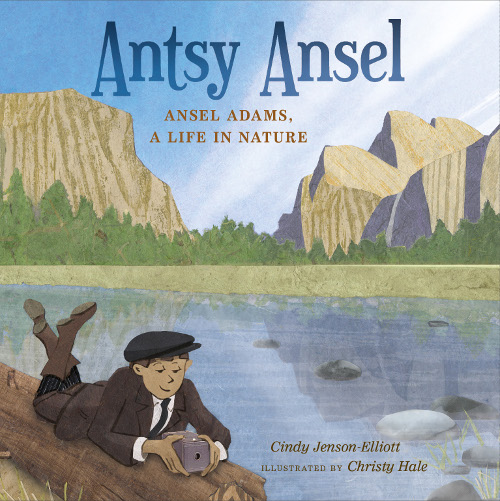
Below are some sketches and some of the finished art. Two spreads in the book are rotated clockwise for extra tall verticals: Half Dome and Kings Canyon.
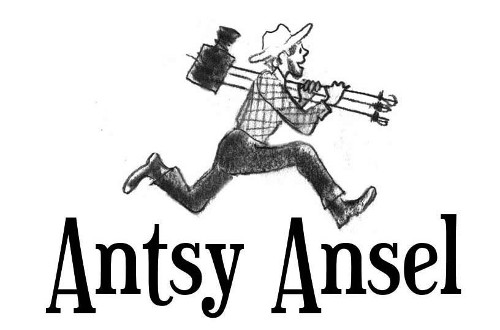
I often design my own books.”

(sketch from dummy) …”
(Click to enlarge)
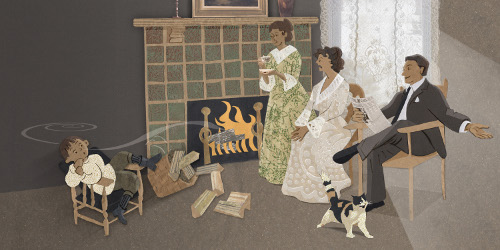
(Click to enlarge)


(sketches from dummy).”
(Click bottom image to enlarge)

(Click to enlarge)

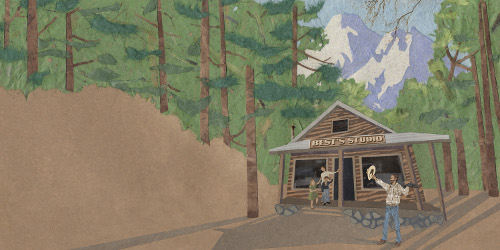
Eventually, Best’s became his photo gallery.”
(Click to enlarge)
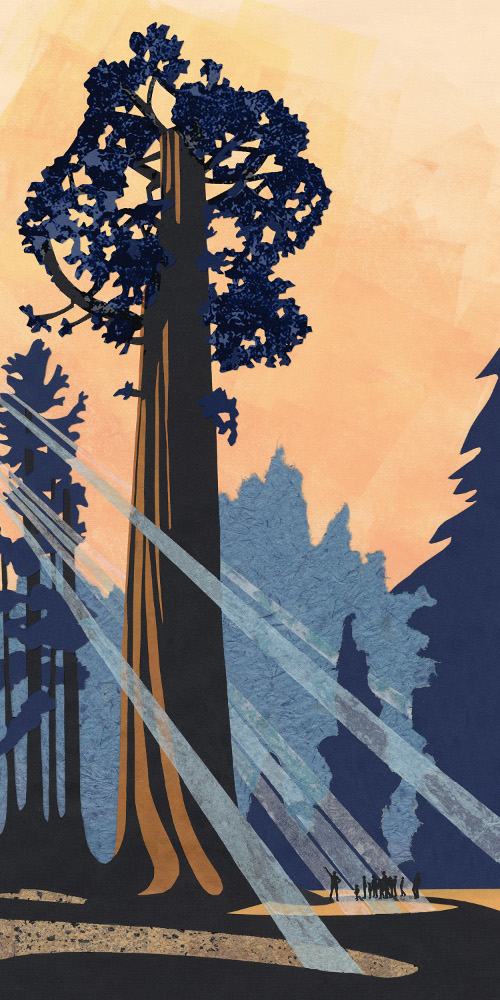

from Christy Ottaviano/Holt.”
(Click to enlarge)
 Okay, we’ve got our coffee, and it’s time to get a bit more detailed with seven questions over breakfast. I thank Christy again for visiting 7-Imp.
Okay, we’ve got our coffee, and it’s time to get a bit more detailed with seven questions over breakfast. I thank Christy again for visiting 7-Imp.
1. Jules: What exactly is your process when you are illustrating a book? You can start wherever you’d like when answering: getting initial ideas, starting to illustrate, or even what it’s like under deadline, etc. Do you outline a great deal of the book before you illustrate or just let your muse lead you on and see where you end up?
Christy: I begin by paginating the text, breaking down the manuscript into the 32-page format, imagining the scenes. Next I go through page-by-page and make a list of everything I need to visually understand to illustrate each spread. Then I start my research. I look for color inspiration in art books. I research picture references for gestures, expressions, setting, clothing, and other aspects of daily living.
Before Google image search was an option, I lived in NYC and spent extensive time at the Picture File Library. The three Elizabeti books were set in Tanzania, so I also did research in the Metropolitan Museum Goldwater Library (Arts of Africa, Oceania, & the Americas). In addition, I asked Liz Szabla, my editor, if I could contact the author directly, since Stephanie Stuve-Bodeen had been in the Peace Corp in Tanzania.
Stephanie sent me a kanga (African textile), numerous photos, a video — and her husband even drew me a sketch to help me understand a pounding process in the illustration below.

When I’ve completed my sketches and they have been approved, I play around to figure out how I will create the finished art.
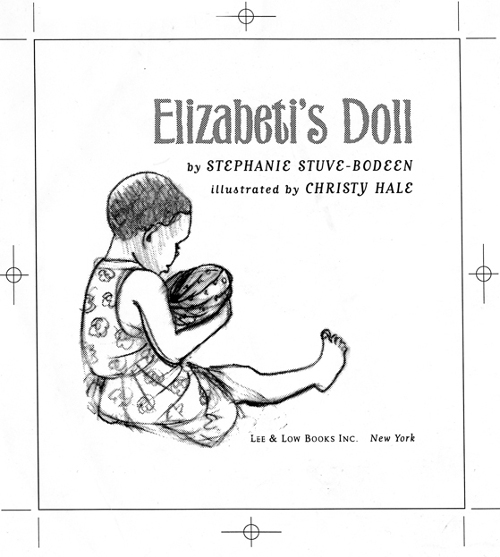
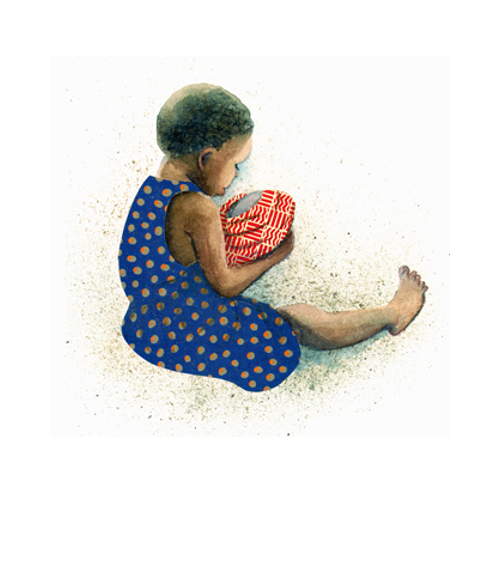
Each book is its own world, so I approach each one differently. I used watercolor and collage for the Elizabeti series. To simulate the sundried Tanzania plains, I splattered paint and created texture with sponge prints.
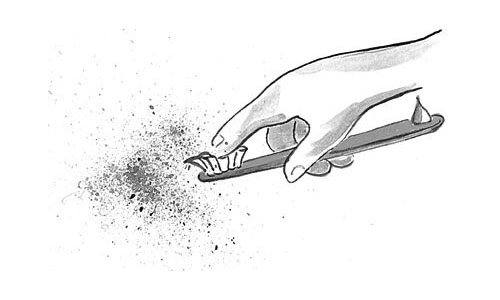

The kanga Stephanie sent inspired me to introduce collage papers for clothing.
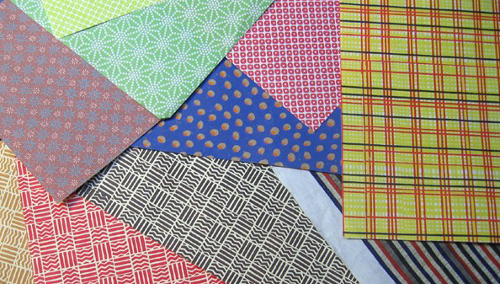
While hunting for patterned papers to use as African textiles in the Elizabeti books, I started noticing the tiny patterns of the interiors of business envelopes. I began collecting them and later made use of my stash for the kimonos in The East-West House.
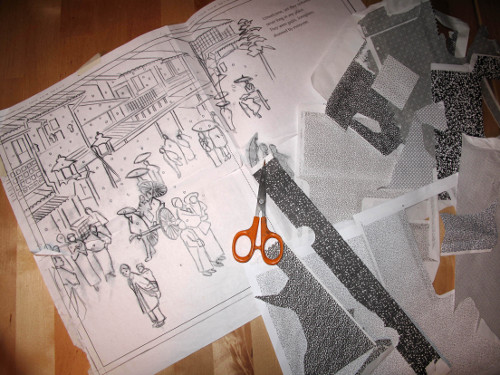
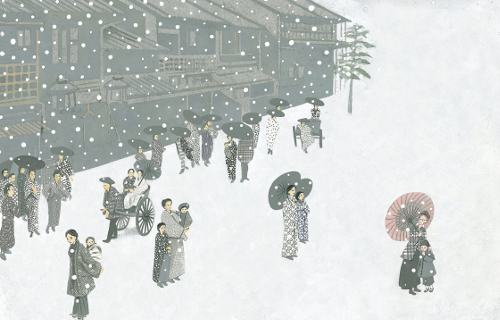
I wanted to evoke Japanese mid-20th century woodblock prints in The East-West House, so I printed some weathered steps to create my own woodgrain papers.

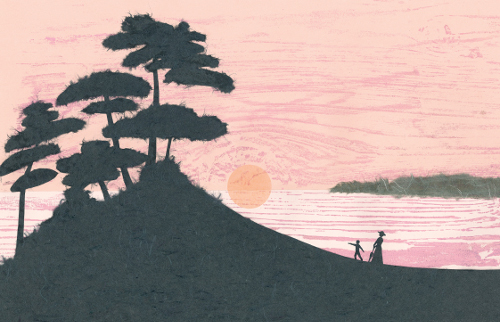
You can see that I had to roll pink ink on my steps! The woodgrain appears throughout the book in different colors on different papers.
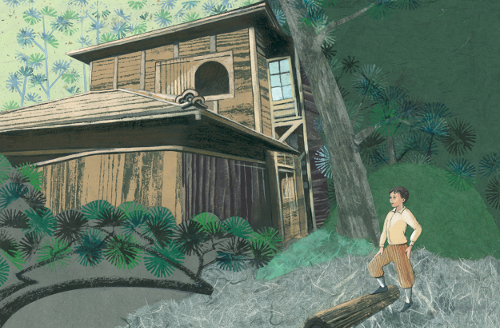
My final image has woodgrain printed on a grocery bag. I also used rubber stamps that I cut from gum erasers.
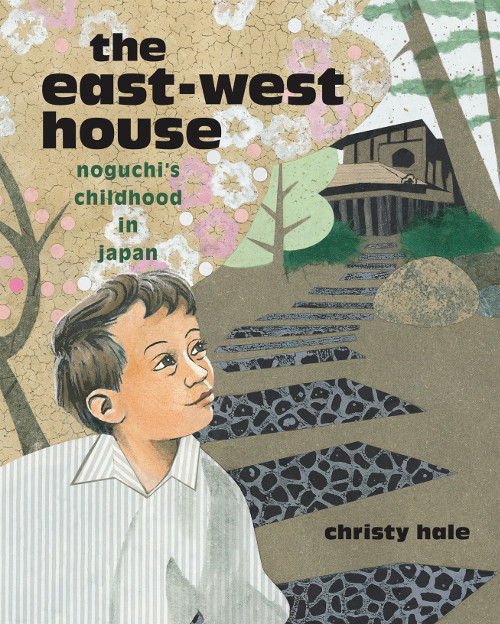

I used woodgrain prints and patterned paper in this cover for Our School Garden! by Rick Swann (Readers to Eaters, 2012). The textured lines and shapes were achieved by rolling an inked brayer over stencils cut out of kitchen wax paper.
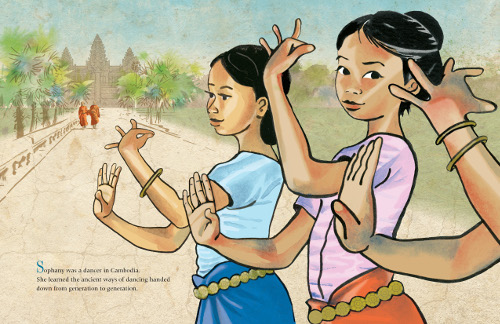
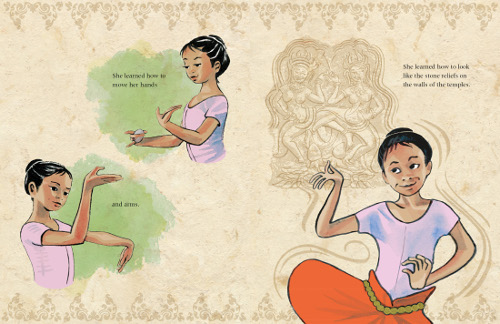
For The Cambodian Dancer: Sophany’s Gift of Hope (Tuttle, 2015), I used an ink brush line, watercolor, and digital layering of color, textured papers, and borders.
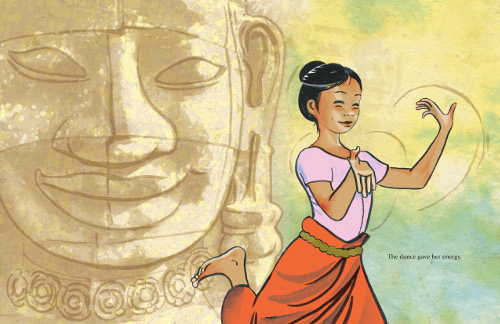
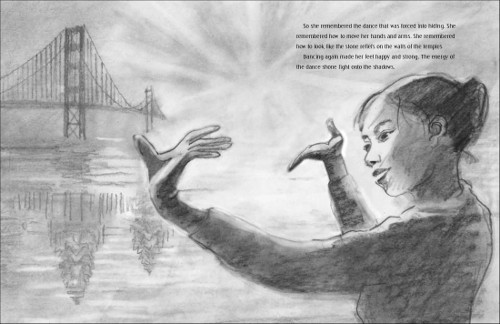
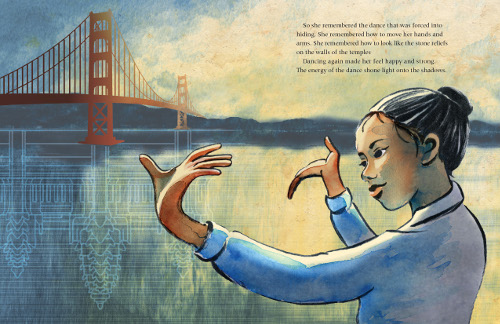
2. Jules: Describe your studio or usual work space.

Christy: My studio is a room at the back of the house. I can close the door and make a mess.
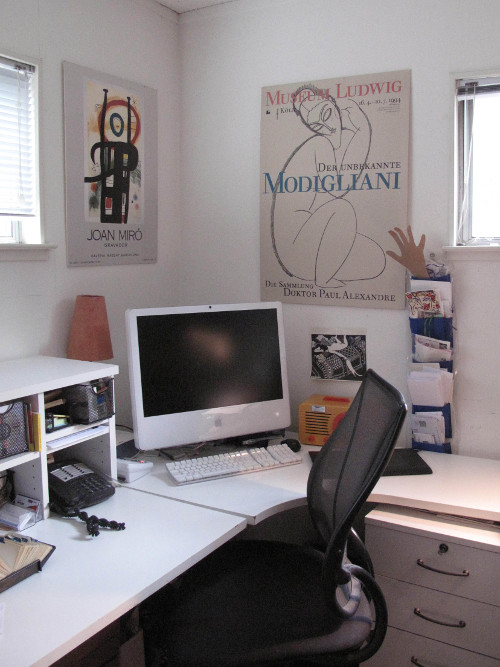
I swivel around from my computer work to a table for my hands-on illustration work.
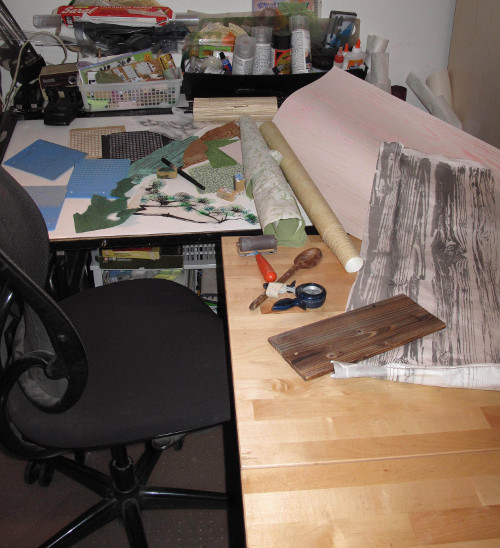
3. Jules: As a book-lover, it interests me: What books or authors and/or illustrators influenced you as an early reader?
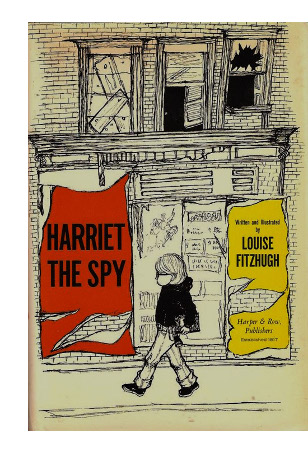 Christy: After our fifth-grade teacher read us Harriet the Spy, my best friend and I started our own detective agency, dressing up in disguises and lurking around the neighborhood taking notes. After our sixth-grade teacher read us My Side of the Mountain, we wanted to live off the land like Sam Gribley. Instead, we camped in an empty lot for a week. Books were alive for us, and we began writing and illustrating our own stories. Both Louise Fitzhugh and Jean Craighead George also illustrated these books, so it was always my goal to do both.
Christy: After our fifth-grade teacher read us Harriet the Spy, my best friend and I started our own detective agency, dressing up in disguises and lurking around the neighborhood taking notes. After our sixth-grade teacher read us My Side of the Mountain, we wanted to live off the land like Sam Gribley. Instead, we camped in an empty lot for a week. Books were alive for us, and we began writing and illustrating our own stories. Both Louise Fitzhugh and Jean Craighead George also illustrated these books, so it was always my goal to do both.
4. Jules: If you could have three (living) authors or illustrators—whom you have not yet met—over for coffee or a glass of rich, red wine, whom would you choose? (Some people cheat and list deceased authors/illustrators. I won’t tell.)
Christy: Hadley Hooper (The Iridescence of Birds) — I love the pattern, color, and the way Hooper composes her space. She does honor to my favorite artist, Matisse.
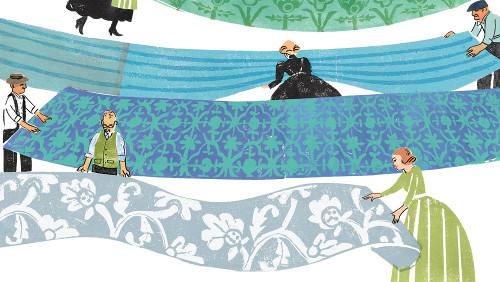
Nonny Hogrogian — I was introduced to her work in a children’s literature course in college. She composes space beautifully. I particularly admire her woodcuts.
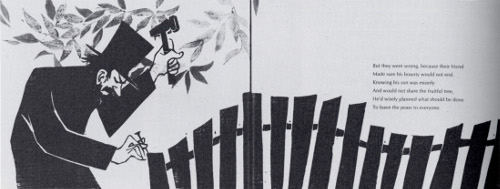
Celestino Piatti — I discovered this Swiss artist through my work for NorthSouth books, but the artist is no longer living. I’m drawn to artists who bring together graphic and painterly styles.

5. Jules: What is currently in rotation on your iPod or loaded in your CD player? Do you listen to music while you create books?
Christy: The soundtrack for Inside Llewyn Davis and some Cuban mambo music.
6. Jules: What’s one thing that most people don’t know about you?
Christy: In first grade, I was hit by a flying saucer while playing with my pet skunk (striped rock). Windy day + aluminum snow saucer = scar under my nose. In high school, I noticed a magazine advertisement from the Institute of Children’s Literature in Connecticut (similar to the Can you draw Bambi? promise of success). I sent off my flying saucer story and received a reply, informing me I could have a career in children’s books.
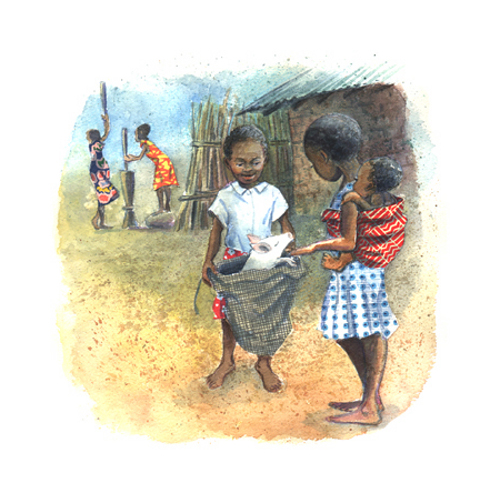
7. Jules: Is there something you wish interviewers would ask you — but never do? Feel free to ask and respond here.
Christy: I’d like to talk about collaboration and having a creative support system — from childhood days, pretending to be in books; then forming my first writers group with my best friend; to teaching art; to printing, binding, and publishing chapbooks with poets; to working side-by-side with editors in-house at various publishers, art-directing other illustrators; to receiving art direction and editorial assistance on my own books. I adore the collaborative creative process. Ideas grow when shared. That growth is pruned for the best possible shape when done with helping hands. I am enormously thankful for editors who have worked with me to refine my work.
I have to mention my beloved illustrator critique group. We bring books to inspire each other, and we each share our projects in various phases of development. Everyone in the group is an accomplished professional, and most are teaching children’s book illustration in some venue, so I am fortunate to have these teacher-art directors problem-solving along with me. We know each other so well now—our strengths, as well as the ways in which we still need to grow—so, lately, we have been posing challenges for each other. With this support system in place, my work can’t help but improve. And I’m just getting warmed-up.

Left to right: Ashley Wolff, Julie Downing,
Katherine Tillotson (top), Lisa Brown (below), and me.”

Jules: What is your favorite word?
Christy: “Bricolage.”
Jules: What is your least favorite word?
Christy: “Whatever.”
Jules: What turns you on creatively, spiritually or emotionally?
Christy: Folk art/crafts, textiles, art books.
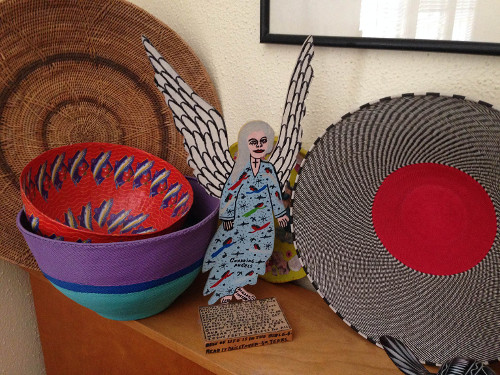
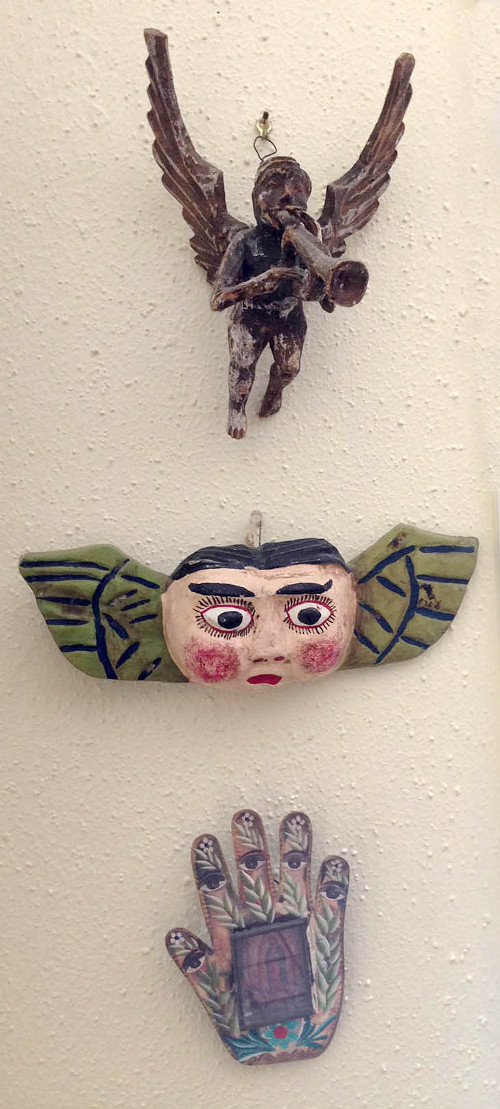
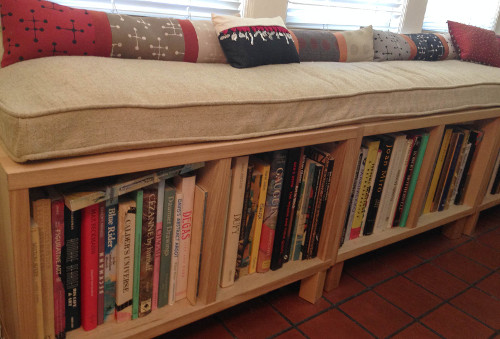
Below: a few of my many art books.”
(Click to enlarge)
Jules: What turns you off?
Christy: Entitlement.
Jules: What sound or noise do you love?
Christy: Scottish accents.
Jules: What sound or noise do you hate?
Christy: Motors revving.
Jules: What profession other than your own would you like to attempt?
Christy: Textile designer.
Jules: What profession would you not like to do?
Christy: Phone solicitor.
Jules: If Heaven exists, what would you like to hear God say when you arrive at the Pearly Gates?
Christy: “A fully-stocked studio is straight ahead. Your friends are waiting for you. Go play. You have all the time you need.”
All images are used by permission of Christy Hale.
The spiffy and slightly sinister gentleman introducing the Pivot Questionnaire is Alfred, copyright © 2009 Matt Phelan.
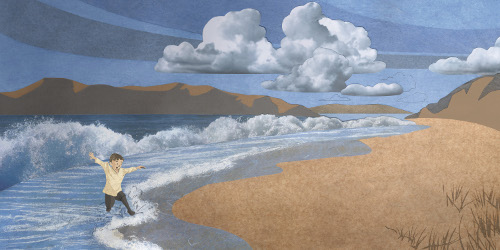

Man, the illustrations – so many caught my eye, from the sweetness on the little girl’s face as she hugged her doll, to the gorgeousness of the Ansel Adams spreads, to the Asian landscape, people and houses. Lots to love and enjoy! Great interview!
Thank you so much for both!
Having had the delight of reading Hale’s books to my children when they were young, and as a fan eagerly awaiting what comes next, I’m thrilled to read this interview full of incite into a creative life.
Our children, now adults, refer to the world of Hale’s illustrations to this day. – Indelibly wonderful!!
Thank you for catching Christy Hale for us!